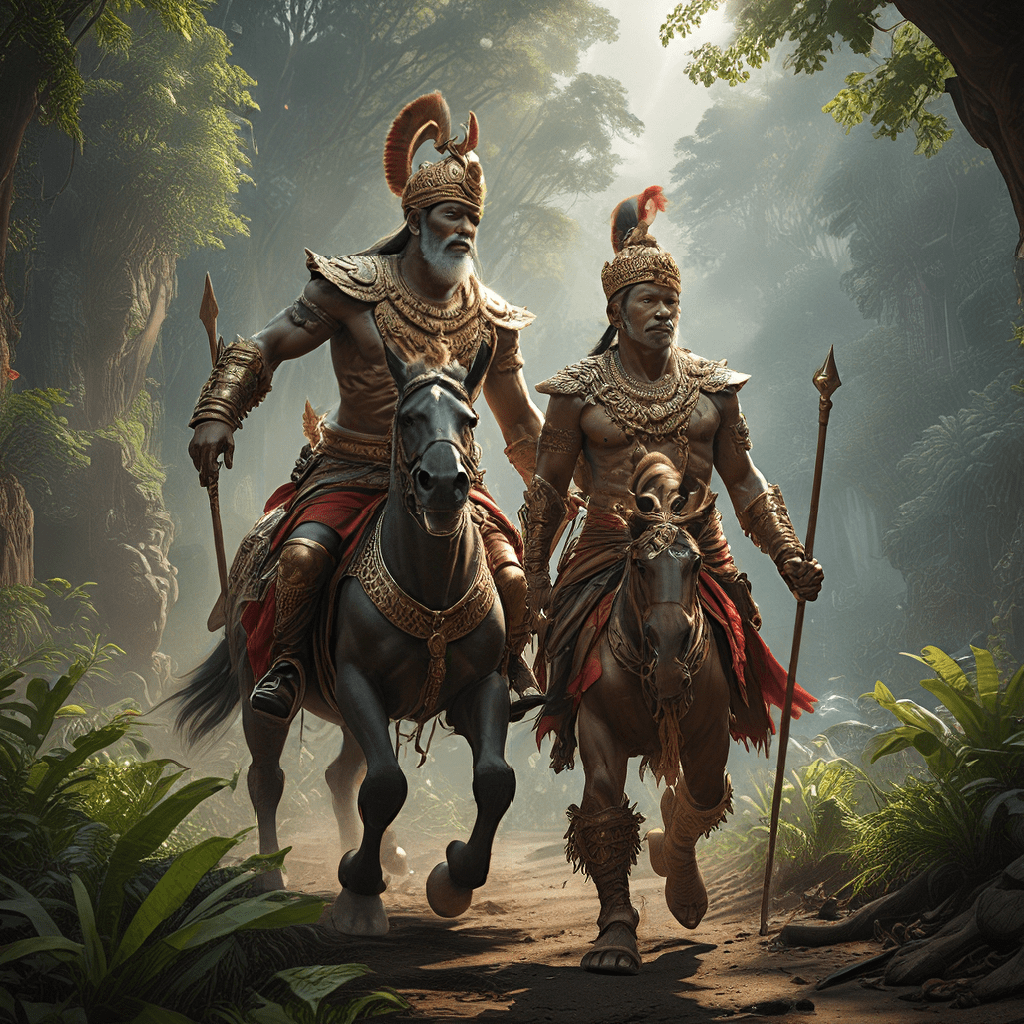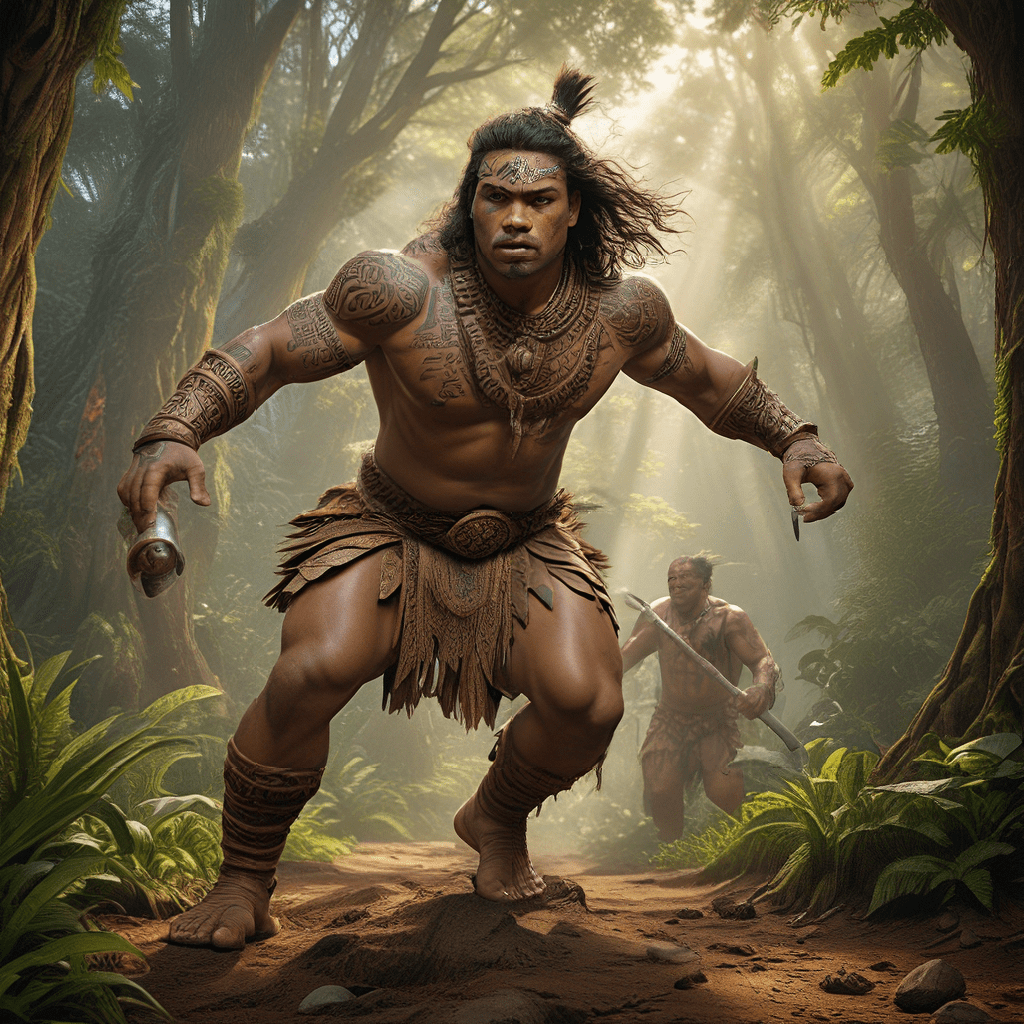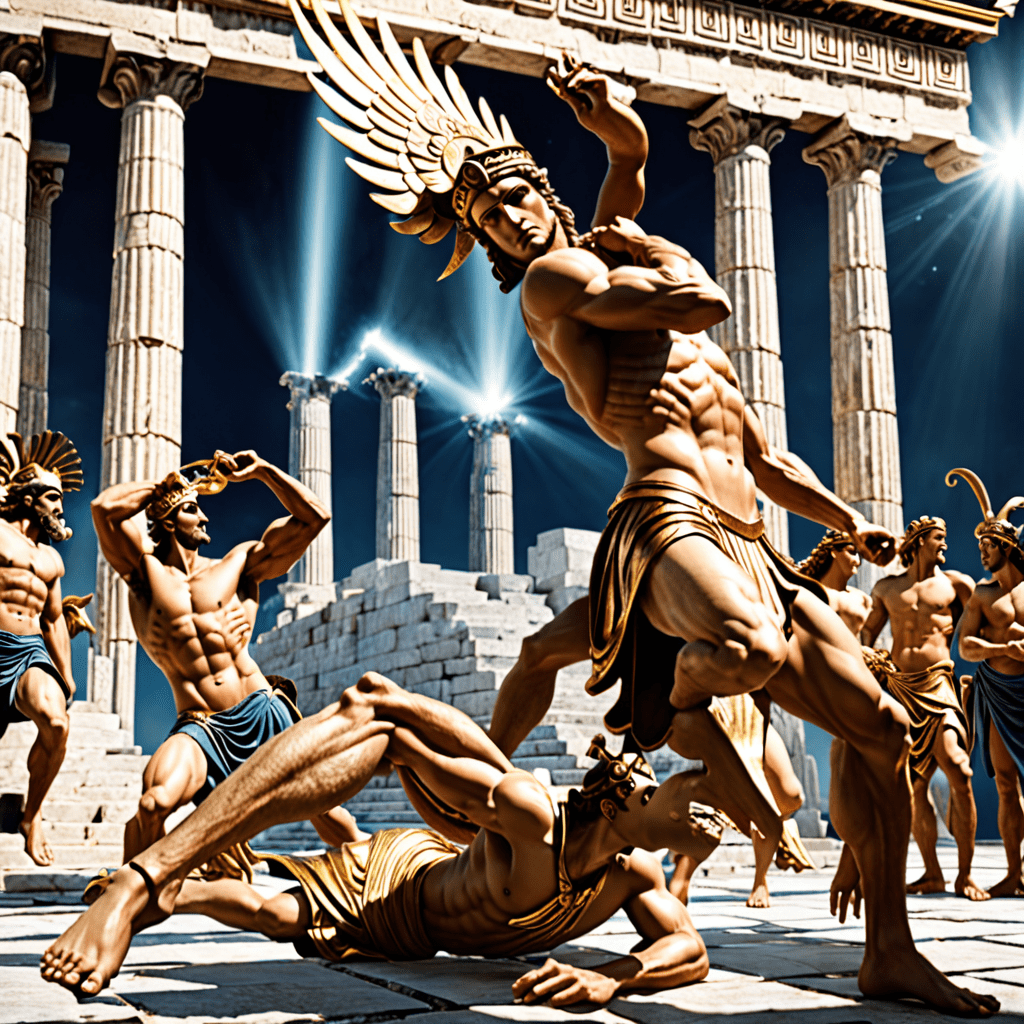The Mythical Journeys of Indonesian Epic Heroes
1. Indonesian Mythology: A Tapestry of Gods, Demons, and Heroes
Indonesian mythology is a vibrant tapestry woven from ancient beliefs, stories, and legends. Rooted in nature worship, ancestor veneration, and the struggle between good and evil, it offers a glimpse into the soul of the Indonesian people. Nature plays a central role, with spirits and deities residing in mountains, rivers, and forests. The belief in the interconnectedness of humans, nature, and the spirit world is deeply ingrained in Indonesian culture. Ancestor worship is another prominent feature, with the spirits of ancestors believed to hold significant influence over the living.
At the heart of this mythology lies a pantheon of gods and goddesses, each with their own unique powers and roles. Batara Guru, the supreme god, resides in the heavenly realm of Kahyangan, and governs the universe. Sang Hyang Widhi, the creator, is often described as the source of all life and the embodiment of the divine essence. Along with these powerful deities, a vast array of spirits, mythical creatures, and supernatural forces populate the Indonesian mythological landscape, shaping the lives and destinies of humans. From mischievous forest spirits to powerful dragons and mystical creatures, these beings add layers of complexity and wonder to the intricate web of beliefs that define Indonesian mythology.
2. Epic Heroes as Embodiments of Values and Ideals
Indonesian epic heroes are more than just legendary figures; they are embodiments of the values and aspirations of the people. These heroes serve as role models, offering insights into the ideal human character. They represent courage, wisdom, loyalty, and the unwavering commitment to justice. Their deeds inspire awe, and their stories reflect the anxieties and hopes of the society that created them. These heroes are not simply superhuman beings; they are human beings with supernatural abilities, facing challenges that resonate with the human experience.
A common thread running through these heroes is their physical prowess and their mastery of supernatural abilities. They are often skilled warriors, armed with magical weapons and possessing extraordinary strength and agility. Beyond physical power, these heroes embody essential moral virtues. They are known for their unwavering loyalty to their families, their communities, and their kingdoms. They are just and compassionate leaders, always ready to defend the weak and uphold the principles of righteousness. Their willingness to sacrifice for the greater good, often facing grave dangers and personal loss, sets them apart as exemplars of selflessness and courage.
3. The Journey as a Metaphor for Life and Transformation
The motif of the journey is central to Indonesian epic tales. These journeys symbolize the challenges, trials, and transformations that mark the human experience. They embody the quest for self-discovery, the search for meaning, and the struggle against adversity. The heroes’ journeys are rarely straightforward; they are often fraught with danger and uncertainty. They encounter mythical creatures, confront powerful deities, and face numerous trials that test their skills, courage, and resolve. These encounters reflect the challenges that individuals face in their own lives, forcing them to confront their weaknesses, discover their strengths, and ultimately evolve as individuals.
4. A Journey Through the Kingdoms of the Gods and the Underworld
Indonesian epics frequently depict the divine realm, Kahyangan, and the underworld, Ngalengka. The heroes’ journeys often take them to these supernatural realms, where they encounter deities, ancestral spirits, and mythical beings. These journeys highlight the belief in the interconnectedness of the human world with the supernatural. The encounter with the divine offers the heroes insight into the deeper mysteries of the universe and the divine order. They may receive guidance from deities, seek divine intervention, or even be granted supernatural powers. In contrast, the underworld embodies the dark side of existence, representing the realm of death, danger, and the unknown. The heroes’ encounters with the underworld often test their courage and resilience, as they face their own fears and confront the challenges of mortality.
5. The Importance of Companionship and Guidance
The heroes’ journeys are rarely undertaken in complete isolation. They are frequently accompanied by loyal companions, mentors, and supernatural allies who provide support, guidance, and protection. These companions may be human warriors, wise elders, or even mythical creatures. Their presence highlights the importance of relationships and the power of collective effort in overcoming challenges. Mentors, often wise and experienced individuals, offer guidance and knowledge, helping the heroes to navigate the complexities of their journeys. Supernatural allies, with their unique abilities and mystical knowledge, provide assistance in battles and trials. These relationships underscore the idea that even the most powerful heroes rely on the support of others to achieve their goals. The journey, therefore, becomes a shared experience, a testament to the strength of human bonds and the value of collaboration.
6. Indonesian Epic Heroes: A Gallery of Legends
The world of Indonesian mythology is rich with famous heroes. Some of the most well-known figures include:
Gatotkaca: A powerful warrior and the son of the Pandava hero, Werkudara, from the epic Mahabharata. Gatotkaca is known for his superhuman strength, his ability to transform into a giant, and his unwavering loyalty. He is a symbol of courage and the protector of justice.
Bima: The second Pandava brother from the Mahabharata, Bima is known for his immense strength, his unwavering commitment to justice, and his ability to overcome any obstacle. He represents the ideal of a righteous warrior, a champion of the people, and a force for good in the world.
** Arjuna:** One of the five Pandava brothers, Arjuna is a skilled archer and a master warrior. He is also a devout follower of the gods and a seeker of knowledge. Arjuna is the embodiment of courage, skill, and spiritual wisdom.
Raden Inu Kertapati: The hero of the Serat Centhini epic, Raden Inu Kertapati is a prince who is known for his bravery, his wisdom, and his unwavering love for his family and his kingdom. He is a model of leadership and embodies the ideal of a benevolent ruler.
Sangkuriang: A legendary figure and the subject of a well-known folktale, Sangkuriang's journey is a testament to his love and his desire for revenge. His story teaches lessons about obedience, respect, and the consequences of anger.
These are just a few examples of the many Indonesian epic heroes who have captured the imagination of the people. Their stories are a testament to the enduring power of myths and legends.
7. The Enduring Nature of Indonesian Mythology
Indonesian mythology continues to hold a significant place in contemporary Indonesian society. Its stories, values, and characters are woven into the fabric of the Indonesian cultural identity. The epics and folktales are still told and retold, passed down through generations. Modern adaptations of these stories, in the form of popular television shows, movies, and books, keep these tales alive for a new generation. Mythological figures like Gatotkaca and Arjuna are often used in popular culture, reflecting their continued relevance and cultural importance.
8. The Impact of Indonesian Mythology on World Culture
Indonesian mythology has also had a significant impact on world culture. The epics of the _Mahabharata_ and the _Ramayana_ are part of the shared cultural heritage of many Southeast Asian countries, including Indonesia. These epics have been adapted and reinterpreted throughout the centuries, influencing the development of literature, drama, and art in these regions.
9. The Power of Storytelling
The enduring power of Indonesian mythology lies in its ability to connect with the human spirit. These stories offer insights into the complexities of human nature, the struggles we face, and the values that guide us. They provide a framework for understanding the world around us and our place within it. The hero’s journey, the struggle against evil, the search for meaning and purpose – these are universal themes that resonate with audiences across cultures and generations.
10. The Importance of Preserving These Stories
Preserving these stories is important. They provide a window into the past, offering insights into the beliefs, values, and aspirations of the Indonesian people. They also serve as a reminder of the power of storytelling to connect us across time and distance. By keeping these tales alive, we can learn from the wisdom of our ancestors and preserve the richness of our cultural heritage.
FAQ:
Q: What is the significance of the journey motif in Indonesian epics?
A: The journey symbolizes the challenges, trials, and transformations that mark the human experience. It reflects the quest for self-discovery, the search for meaning, and the struggle against adversity.
Q: What are some common challenges faced by heroes in Indonesian epics?
A: Heroes often confront mythical creatures, powerful deities, and trials that test their courage, skills, and resolve.
Q: What are some of the key features of Indonesian mythology?
A: Features include nature worship, ancestor veneration, the struggle between good and evil, and the belief in the interconnectedness of the human world with the supernatural.
Q: What role do supernatural beings play in Indonesian epics?
A: Supernatural beings often serve as allies or adversaries to the heroes. These creatures may provide guidance, protection, or obstacles in the heroes’ journeys.
Q: What is the importance of preserving Indonesian mythology?
A: Preserving these stories is crucial for understanding the beliefs, values, and aspirations of the Indonesian people. It is also important for preserving the cultural heritage of Indonesia.


